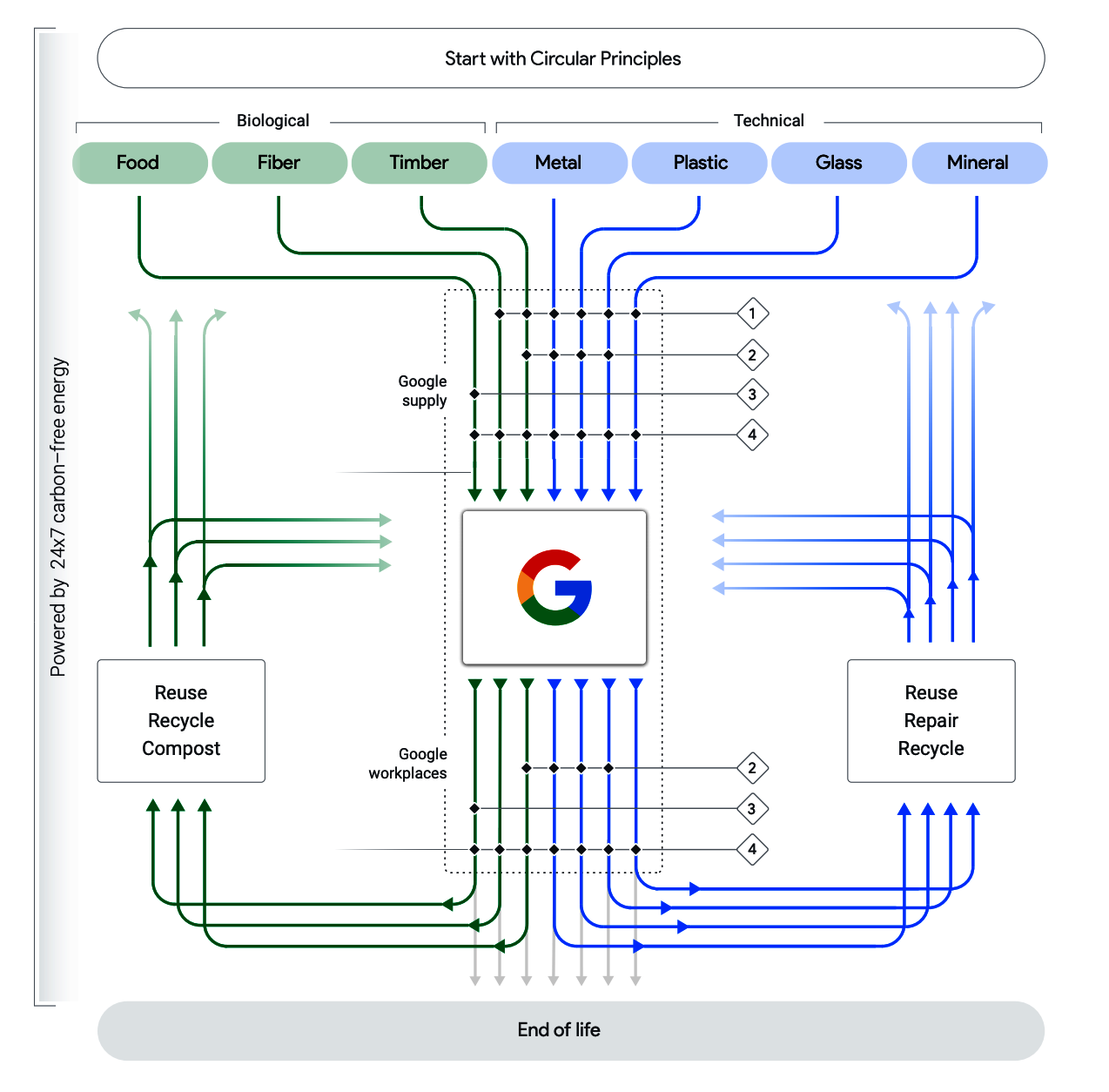Google reported in June its goal to be part of a circular economy by operating every part of its business in an environmentally sustainable way and disrupting the waste economy. According to the Google report, transitioning to a circular economy could generate US$4.5 trillion in new economic output by 2030. The company said it has begun applying circular economy thinking to design out waste, keep the products and materials in use, and utilize safe and healthy materials. Google reportedly intends to embed these principles of circularity into the fabric of its infrastructure, operations, and products: From how it will build and manage servers in its data centers, to how to design consumer electronics and select the materials they use to build and furnish its offices. Artificial intelligence and machine learning will help enable the company to can test its hypothesis that one of the key challenges with waste is poorly managed data.
“The circular economy concept provides a model of change and renewal that intends to improve this relationship between consumption of materials and the impacts on human and environmental systems. Circularity offers both a set of scientific principles and a mindset to problem-solving. Achieving circularity challenges how we design products, buildings, and infrastructure.”
Google also published its new principles applying its new circularity concept:
1) Design out waste and pollution
Circularity must be incorporated into the design from inception, so things created today can become the resources of tomorrow. Design must also eliminate the negative impacts of economic activity that could cause damage to human health and natural systems. This includes factors such as the release of greenhouse gases, the use of toxic and hazardous substances, the pollution of air, land, and water, and landfilling and incineration of waste.
2) Keep products and materials in use
Producing materials requires the use of resources, but how those materials are used can have dramatically different impacts. So, the effective use of each resource must be extended, for as long as practical, while balancing safety and quality. Maximizing product use and reuse helps to preserve embedded energy, labor, and materials and reduces environmental impact. Examples include: designing for durability, repair, reuse, remanufacturing, and ultimately recycling. For biological materials, this could mean cascaded use of by-products, before nutrients are returned to the biosphere.
3) Promote healthy materials and safe chemistry
A circular economy requires to not only focus on the flows of materials through business, but also to ensure safe and healthy use, reuse, and recycling of resources. To keep materials flowing in commerce longer, they must be designed to be safe for human and environmental systems, because we can’t change the chemistry of products once we put them out in the world.
According to Anna Meegan, head of sustainability at Google’s consumer hardware, the company will soon have 100% of its Made by Google products incorporating recycled materials starting in 2022, and that 100% of all shipments going to or from customers will be carbon neutral by 2020. Google claimed that its carbon emissions for product shipments from 2017 to 2018, decreased by 40 percent. The company also launched its Power Project, which will bring one million energy- and money-saving Nest thermostats to families in need by 2023. Products like the Nest Thermostat E, Google Home, and Chromecast reportedly all contain parts with 20%–75% post-consumer recycled plastic content.
Last year, Google also published its Restricted Substances Specification to ensure the use of safer materials across its product portfolio.

Discussion
Comments are closed.